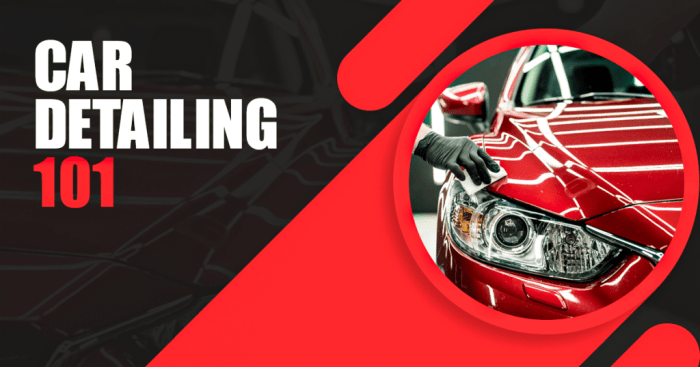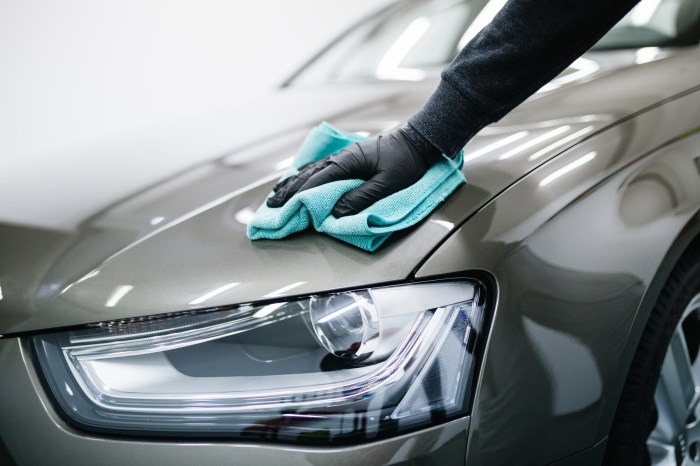Maintaining your car’s pristine condition isn’t just about aesthetics; it’s about preserving its value and ensuring its longevity. With the right automotive detailing techniques, you can keep your vehicle looking showroom-ready for years to come. This comprehensive guide provides detailed, actionable tips for achieving that sparkling, new-car shine well into 2025 and beyond.
Preparing for the Detailing Process: Essential Steps
Before you even begin washing, proper preparation is key. This initial phase sets the stage for a flawless detailing experience. Overlooking this step can lead to scratches and swirl marks, negating the benefits of your subsequent efforts.
1. Choosing the Right Location and Time
Select a shaded area, ideally a garage or carport, to avoid direct sunlight. Direct sunlight can cause your cleaning solutions to dry too quickly, leaving streaks and water spots. The ideal time is typically early morning or late afternoon to avoid harsh sun and excessive heat.
2. Gathering Your Supplies
A Comprehensive Checklist
Having all your materials ready prevents interruptions and ensures a smooth workflow. Your detailing arsenal should include:
- Two wash buckets (one for soap, one for rinsing)
- Grit guards for both buckets (to prevent recontamination)
- High-quality wash mitts or wash brushes (microfiber is recommended)
- Car wash soap (specifically designed for automotive use)
- Wheel cleaner
- Tire cleaner and dressing
- Drying towels (microfiber is ideal)
- Detailing spray
- Interior cleaner
- Vacuum cleaner with various attachments
- Glass cleaner
- Leather conditioner (if applicable)
- Wax or sealant
- Applicator pads
- Microfiber polishing cloths
The Detailing Process: A Step-by-Step Guide
Now, let’s delve into the actual detailing process. Remember, patience and attention to detail are crucial for optimal results.
1. Pre-Wash
Removing Loose Debris
Begin by rinsing your car thoroughly with a pressure washer or garden hose. This removes loose dirt, grime, and other contaminants that could scratch your paint during the washing phase. Pay particular attention to the wheel wells and lower panels.
2. Washing
The Gentle Approach
Use the two-bucket method to wash your car. Dip your wash mitt into the soapy water, wash a section of your car, then rinse the mitt in the rinse bucket. This prevents recontamination and minimizes the risk of scratching.
3. Wheel and Tire Cleaning
Special Attention Required
Wheels and tires often accumulate brake dust, road grime, and other stubborn contaminants. Use a dedicated wheel cleaner to effectively remove this grime. Follow the product instructions carefully, and use a separate brush or mitt for your wheels to avoid transferring contaminants to your car’s paint.
4. Drying

Source: autostore.pk
Preventing Water Spots
Thoroughly dry your car using high-quality microfiber drying towels. Avoid using old towels or those that might contain abrasive particles. Work in sections, ensuring you remove all water to prevent water spots.
5. Paint Correction (Optional)
Addressing Imperfections
If your car has swirl marks, scratches, or other imperfections, consider paint correction techniques. This may involve using polishing compounds and machine polishers to remove these blemishes. This is a more advanced step, and it’s advisable to seek professional help if you’re unsure.
6. Waxing or Sealing
Protecting Your Investment
Applying a high-quality wax or sealant adds a protective layer to your car’s paint, shielding it from the elements and enhancing its shine. Follow the product instructions carefully for best results. Consider ceramic coatings for long-term protection.
7. Interior Detailing
A Clean and Organized Cabin
Vacuum the interior thoroughly, paying attention to crevices and hard-to-reach areas. Use an appropriate interior cleaner to wipe down surfaces, and don’t forget to clean and condition leather seats if necessary. Clean and treat any fabric upholstery. Use glass cleaner for a streak-free finish on windows and mirrors.
8. Final Inspection
The Finishing Touches
Once you’ve completed all the steps, take a final walk around your car to check for any missed spots or areas that require additional attention. This final inspection ensures a truly flawless result.
Maintaining Your Car’s Shine: Ongoing Care
Detailing your car isn’t a one-time event; it’s an ongoing process. Regular maintenance will help you preserve your car’s appearance and protect its value.
- Regular washing (at least once a week, more frequently if needed)
- Quick detail sprays for in-between washes
- Monthly waxing or sealant application
- Regular interior cleaning
- Protecting your car from the elements (e.g., parking in a garage)
Frequently Asked Questions (FAQ)
Here are some common questions about car detailing:

Source: com.au
- Q: How often should I detail my car? A: The frequency depends on your usage and environment. A thorough detail every 3-6 months is recommended, with regular washing in between.
- Q: What’s the difference between waxing and sealing? A: Wax provides a temporary protective layer, while sealants offer longer-lasting protection. Ceramic coatings offer the most durable protection.
- Q: Can I use household cleaners on my car? A: No, household cleaners can damage your car’s paint and interior. Always use automotive-specific products.
- Q: How do I remove bird droppings? A: Remove bird droppings as soon as possible to prevent etching. Rinse the area thoroughly with water and then wash as usual.
- Q: What’s the best way to clean leather seats? A: Use a dedicated leather cleaner and conditioner to clean and moisturize your leather seats.
Resources
- Autogeek.net
-A comprehensive resource for detailing products and techniques. - Adam’s Polishes
-A popular brand of detailing products. - Meguiar’s
-Another well-known brand offering a wide range of detailing products.
Call to Action
Ready to transform your car’s appearance and protect its value? Start implementing these detailing tips today and enjoy the satisfaction of a showroom-ready vehicle for years to come! Don’t hesitate to share your detailing experiences and ask questions in the comments below!
Frequently Asked Questions
What type of wax is best for my car’s paint?

Source: cardissection.com
The best wax depends on your paint type and desired level of protection. Synthetic waxes offer durability, while natural carnauba waxes provide a deep shine. Consult your car’s manual or a detailing professional for specific recommendations.
How often should I detail my car’s interior?
Ideally, a thorough interior detail should be performed every few months, or more frequently depending on usage. Regular vacuuming and spot cleaning will help maintain cleanliness between deep cleans.
What are some environmentally friendly detailing products?
Many companies offer eco-friendly detailing products that use biodegradable ingredients and minimize environmental impact. Look for certifications like “eco-friendly” or “sustainable” when choosing products.
